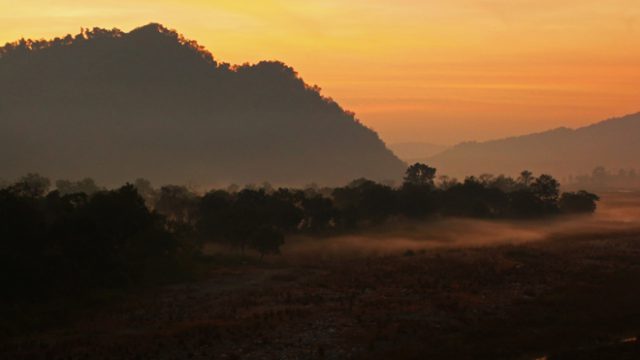One of the first thoughts that pop into the heads of most wildlife enthusiasts at the mere mention of ‘big cats’ and ‘national parks’ is a jungle safari. Surely, they think, there can’t be any other way of spotting a wild feline in its natural habitat? Well, in my experience, that isn’t always true. I love exploring our jungles, but at the same time I’m quite fed up with the hullabaloo that always accompanied a tiger sighting from the back of a safari jeep. And I won’t even begin to list my many run-ins with the tourism mafia. I wanted to find more pleasant ways of experiencing the wild, when I came across a lovely little place in Jim Corbett National Park.
Corbett is India’s oldest tiger reserve and its proximity to the national capital makes it easily accessible. This means that it’s always brimming with tourists. Choosing to get away from the grating tourist gatherings I found myself in a non-descript hamlet called Mohaan. It’s about an hour’s drive from the stifling string of resorts in Dhikuli, which is where most tourists prefer to put up. Mohaan isn’t the most ideal location if you’re looking to go on tiger safaris. The two most sought-after gates of the park, Bijrani and Jhirna, are about an hour away. However, that poses no hindrance to a meaningful wildlife experience.

On my first morning here, I went for a walk with my guide Puran along a wide riverbed in the vicinity of Mohaan, and came across tiger tracks barely an hour old. Puran had spent a lifetime in these jungles and knew his trade well, he was certain that the Tiger and us were only a few meters apart even though we couldn’t see it. Now tigers are extremely shy creatures; they are inherently fearful of us and will flee at the faintest sign of human presence, so an encounter on foot was unlikely. The next morning revealed an even fresher set of pugmarks at the same spot. This gave me an idea. I’d noticed that a ledge along a highway that traversed the hillside above this section of the riverbed overlooked a broad expanse of the valley. My plan was to leave the riverbed so as to not scare away the tiger and use the highway to get to the ledge at the crack of dawn. It would be the perfect spot for us to observe the tiger from.
The next day, within half an hour of positioning ourselves on the ledge, we heard the tell-tale cheetal alarm calls that signified the presence of a tiger nearby. We starting scanning every inch of the riverbed for any sign of the tiger’s presence, but couldn’t see anything in the insufficient dawn light. Luckily, even as the light got better, the cheetal calls continued. All of a sudden, this was punctuated by a deep growl. Puran changed his position and turned to look in the direction of this new sound. His sharp instincts, honed by a life spent in the jungles, didn’t fail him; he picked out the tiger’s movement immediately and kept pointing out the big cat as it majestically walked away into the undergrowth. I’ve observed wild tigers many times before, at times from frighteningly close distances, but none of that measured up to this one. Sighting a tiger takes a back-seat when you’ve not only seen a jungle come alive at a crack of dawn but have also been witness to the electrifying drama that plays out when the king takes centre stage.

My second encounter of this nature took place in the jungles of Gir. I’d just missed a leopard sighting during the morning safari due to our guide’s callousness. I was desperate for my first view of a leopard, but little did I know it would happen in quite an unusual fashion. That afternoon, while I was grumbling about my missed opportunity, a member of the staff at the resortI was staying at, took pity and decided to help. He told me of a leopard that inhabited a dry nullah that ran parallel to the resort’s perimeter wall. Apparently this individual was often spotted from a bridge built across the nullah. That evening, I decided to try my luck and made my way to the bridge. I perched there for a couple of hours, feeling increasingly frustrated. But then, just as the sun was about to set on my hopes, a gorgeous, stout leopard leaped out from one side of the undergrowth, scraped its paw on the ground a couple of times, and, in one graceful, sinewy bound, leaped back into the foliage and out of sight. It had lasted for just about seven to eight seconds but that leopard is still etched in my memory. As someone who often traipses off to Indian jungles, I can vouch for the fact that nothing will get your pulse racing as much as an encounter with a wild creature on its own turf, sans the cacophony of tourists.




